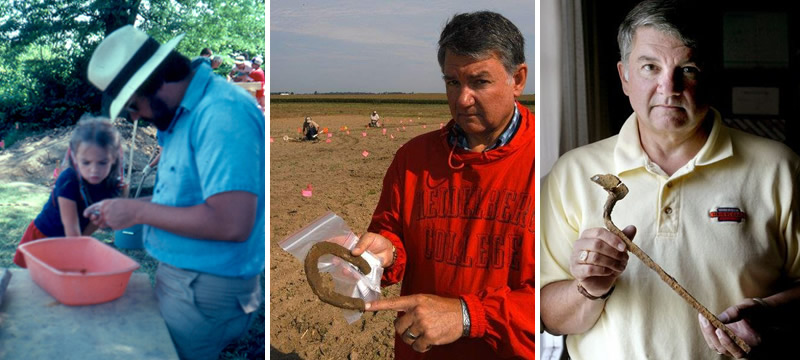Mike Pratt remembers an archeological adventure


Mike describes his role as an archeologist as interpreting culture through material culture and looking for patterns to interpret what life was like at historic sites. He said, "You go into the field looking for what is left behind. For me personally and other people I work with in archeology, what is really cool is knowing you are the first person to pick up or see or recognize something that was dropped by somebody else perhaps hundreds or thousands of years ago."
He reminisces about one such discovery he made at the Battle of Fallen Timbers historic site:
"When I was working at the Battle of Fallen Timbers, we were using metal detectors and we found a musket ball. I knew when I picked it up that it had never been fired because it wasn't damaged; I knew also, because of the size, that it came from an army musket and it had been possessed by an American soldier.
The bullet had a screw hole in it -- this told me that the soldier had a bullet that wouldn't fire. In the midst of a battle, while being shot at, this guy had to take the ramrod out and put it down the barrel, in order to get the bullet out before he could reload and try to fire it.
It's hard to know whether or not he survived that but I know that deaths had occurred in the area where it was found. I also know that it had rained in the morning and the general had told the soldiers to unload and dry out their weapons. If he hadn't cleaned his gun, it may have cost him his life.
I held this musket ball in my hand and I was thinking, what was this guy thinking, and what was he trying to do? How fast and how fumbling were his motions in order to get his gun working again? He was standing in an area where we know American soldiers were killed and where the hottest combat of that battle occurred. That's what we knew from the study of the site and from other people's eyewitness accounts.
That's how archaeologists interpret culture. And I love to do that. I worked for more than 30 years with a group of volunteer archaeologists who are some of my best and longest friends up in the Toledo area. We just had a great time."

